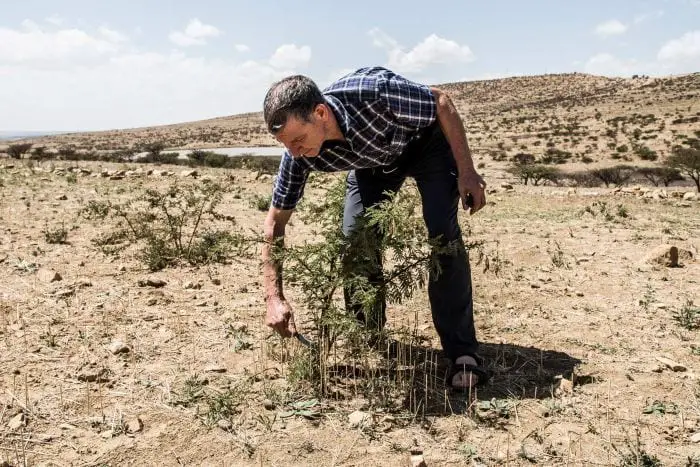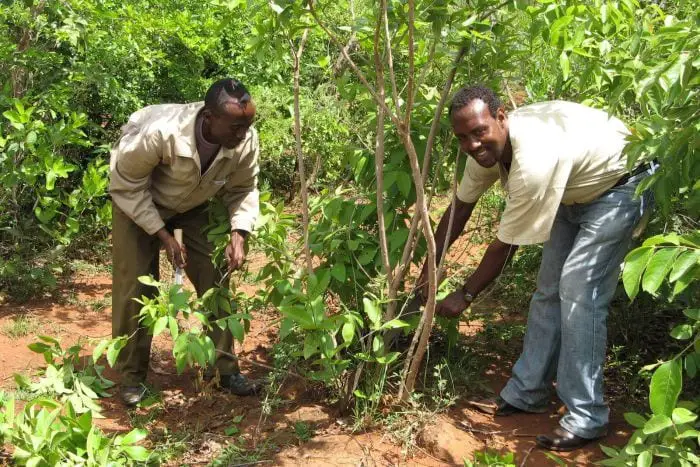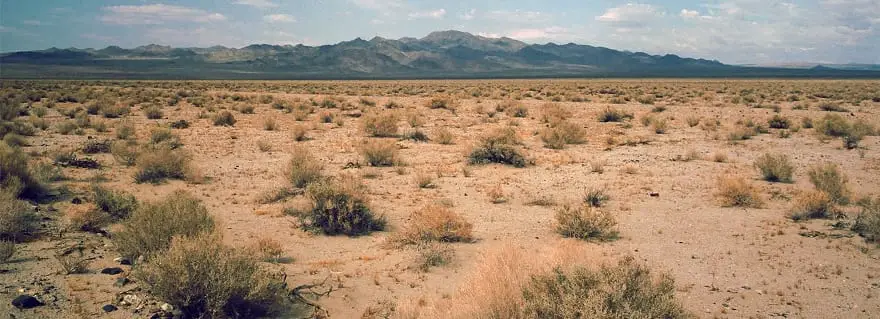From 1981 to 1999 my family and I lived in Niger Republic, a borderland of the Sahara Desert.
I was in charge of a small reforestation project. The hard-earned lessons acquired during that period serve me to this day.
Contents
What Life Near the Sahara Taught Me About Australian Bushfires
When I arrived in 1981, I was confronted by an environment on the cusp of ecological collapse and barely able to support life.
The country was in undeclared crisis. In 1984, Niger faced famine.
Severe drought and crop failure the previous year precipitated this crisis.
Deforestation and land degradation over previous decades significantly exacerbated the impact.

Our Message Wasn’t Popular
The destruction of nearly all tree cover had resulted in loss of soil fertility and the soil’s ability to store and slowly release moisture.
Trees in that environment radically reduce soil and air temperatures and wind speeds, reducing the rate at which the soil dries out and increasing the utilisation of what rain does fall.

Additionally, many of the indigenous species in Niger exhibit hydraulic lift — the ability to draw up water from deep in the soil profile and leak it out through shallow roots. This can in turn effectively bio-irrigate crops.
While our first priority was to get food to desperately needy families, we did not shy away from tackling one of the major root causes of the problem — deforestation.
It wasn’t a popular message.
A Tipping Point Had Been Passed
But a crisis needs to be called out for what it is. No other designation will result in the required concerted corrective action necessary to solve the problem.
Deforestation contributed to land degradation and desertification.
I did not know about climate change at the time, but it was not sufficient to declare that drought was a normal part of the climate cycle.
A tipping point had been passed which called for a more intensive level of intervention.
In relation to our own predicament in Australia, only the most hardened fingers-in-ears denialist would still cling to the fantasy that the current drought and unprecedented bushfire scenario are a normal part of the Australian milieu.
We Are in a Climate Crisis
Unfortunately, it’s not just a war of words. Failure to declare a climate emergency has resulted in a failure to prepare and take action.
This bushfire season we have experienced the catastrophic consequences of those failures.
We are in a climate crisis and the first step towards addressing a crisis is to declare it so.
In Niger, individuals and communities for the most part weren’t particularly interested. Most didn’t want to change.
Regardless, we combined humanitarian relief activities with aggressive reforestation activities. Gently, patiently, respectfully bringing people on a journey.
We were teaching, but also learning with them, about the best methods, the best species, the best crop-tree dynamics.
The crisis had people’s attention and opened the door of comprehension and willingness to change more than a notch.
There’s One Big Fib We’re Telling Ourselves
The result was an environmental transformation which has been described as perhaps one of the most significant positive environmental changes in all of the Sahel, if not all of Africa.
Today, Niger boasts more than six million hectares of farmland with an average tree density of 40 trees per hectare (about 240 million trees) — up from four trees per hectare in 1980.

Had we waited until after the crisis to tackle deforestation it would have been too late. People’s heightened sense of urgency and the need to act decisively would have passed.
And that’s what concerns me about the current response to the bushfire crisis in Australia: the calls to only treat the symptom and not the underlying causes.
The big fib is that now is not the time to talk about the climate.
It’s Time to Tackle the Causes
Today, even though Niger remains a drought and disaster-prone country, farmers in Niger are growing an additional 500,000 tons of grain every year without external aid.
The gross annual income going directly to 4.5 million of the world’s poorest farmers is estimated at $US900 million.

I would argue strongly that even as we put all of our efforts into keeping Australians safe, putting out the fires and helping with recovery, we simultaneously need to be on a war footing, tackling the causes of the fires.
The project I managed was minuscule in size and budget. I only had a few staff and we worked in just 12 villages at the start of the famine, yet the famine impacted millions.
USAID made an assessment of our capacity. We only found out through others that they had dismissed us as too small to have any serious impact.
Yet, eight months later we had purchased 1,800 tons of grain and distributed it in 100 villages, assisting over 50,000 people.

Importantly, in the following 20 years, the reforestation technique introduced during that period went viral in Niger.
Today it is spreading across Africa and beyond.
There’s No Excuse for Foot-Dragging
We could have given up because we were too small, too insignificant in our own eyes. We could have said, “we’ve done our bit, let the big guys do theirs”.
The problem was, initially at least, the big guys weren’t stepping up to the plate either and people were going hungry. Children were dying.
I no longer care about how small my contribution may appear. I know I can make a difference.
I owe it to myself and I owe it to those I can help and to those I can give hope to.

Even though Australia’s emissions are small on a global scale, this is no excuse for foot-dragging on emissions reductions and unfettered exploitation of fossil fuel reserves for fast profits.
We need to reduce our reliance on coal and drastically reduce greenhouse gas emissions which contribute to the climate changes which have contributed to the unprecedented drought, extended fire seasons and high temperatures.
To not do so would be to commit ourselves to perpetual firefighting mode.
It Is Not Too Late to Show Leadership
We also need to take seriously the outstanding examples of regenerative agricultural practices our first nations peoples and farmers have pioneered.
These include Indigenous land management systems and burning practices, permaculture, natural sequence farming, keyline farming, native pasture cropping and application of minimal tillage and holistic grazing management principles.
These practices simultaneously mitigate against climate change while enabling adaptation.
It is not too late to show leadership. Our economy is still strong enough to divest from the short-term benefit of fossil fuel exploitation and invest in energy sources of the future — and through the ingenuity and example we provide, lead the way for other nations to follow.
Our leadership in regenerative agricultural practices is having a ripple effect beyond our shores. Now is the time to seriously scale up adoption at home.
We Know the Answer — Now It’s Time for Action
Living on the edge of the Sahara Desert I learnt that being environmentally responsible and having economic growth and prosperity are not mutually exclusive. Truly sustainable prosperity is co-dependent with environmental responsibility.
It has been pointed out that while there are many environments with no economy, there are no economies that do not rely on the environment.

It was always difficult to convince hard-pressed families, many of whom regularly lived on the edge of hunger, that managing the landscape differently, working with nature instead of fighting against it, would give them much greater prosperity and food security than by always destroying nature and working against it.
And this has proven true in country after country that I have worked in. It took a severe crisis to elicit positive change.
Sadly, Australia is going through a severe crisis right now.
The question is, will we be satisfied with continuing to deal with symptoms? Or will we make the hard choices and tackle root causes even as we deal with the immediate crisis?
We know the answer and we’ve heard all the arguments. Now it’s time for action.
AUTHOR: Tony Rinaudo is the Senior Climate Action Advisor at World Vision Australia.
This article was originally published by Australia’s ABC.




